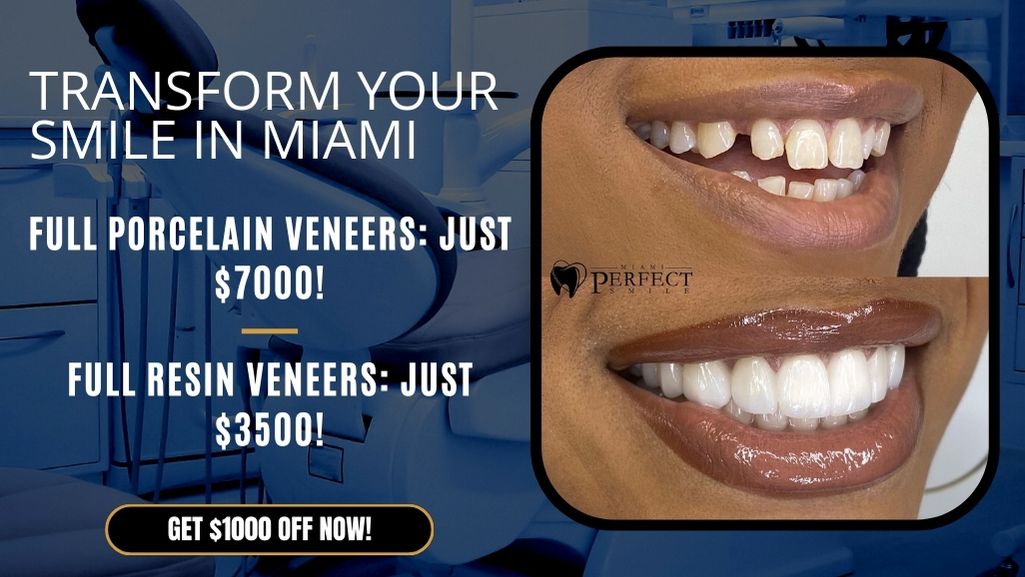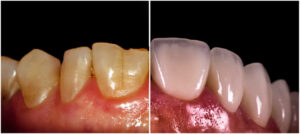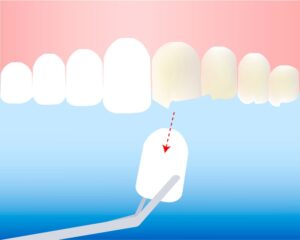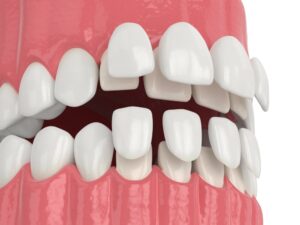Today we will talk about all the types of dental veneers that exist so far. We’ll give you all the details you need to know about the types of dental veneers, from their name and the material they’re made of, to how they fit on your teeth and how to care for them, to their price range. Do not miss this article, which will allow you to become very knowledgeable regarding the subject.
According to a publication by the American Academy of Cosmetic Dentistry (AACD), dental veneers are a cosmetic procedure that has become almost as popular as tooth whitening, and sometimes surpass it in popularity. The frequency of cosmetic dental treatment using veneers has increased by 30% annually and is projected to continue to increase.
Ready for a stunning smile transformation? Discover unbeatable veneer specials in Miami and take the first step towards your dream smile. Don’t wait, schedule now and seize this limited-time opportunity!

If you are interested in receiving porcelain veneers in Miami, call us at 786 603 7514.
What types of veneers are there?
Dental veneers are part of the so-called “cosmetic dentistry”. They emerged at the end of the 40s of the 20th century, as an aesthetic resource for Hollywood actors. That’s why those veneers were called “Hollywood Fronts”. At that time, they were not as permanent as they are now, and in fact, they were quite ephemeral. They could not last more than the time of a movie shoot or a TV appearance. In the 50’s there were slightly better veneers, which were based on orthophosphoric acid etching and the use of composite resins. These were more durable and realistic, although still not like today’s veneers can be considered a mere cosmetic treatment for the teeth, but they are actually more than that. In addition to their aesthetic contribution, they help correct dental disorders such as lack of enamel (dental hypoplasia), or tooth breakage caused by cavities, bruxism, or trauma.

At present (without considering the types that we have mentioned, and that have already been discontinued), we can say that there are basically 4 types of dental veneers from the point of view of the material with which they are manufactured: ceramic or composite, those of porcelain, those of zirconium and those of lithium disilicate. Let’s look at each of the 4 types in detail.
Ceramic, resin, or composite veneers
They are based on a combination of synthetic resins, which are placed in the form of a thin layer on the tooth or teeth, and which are shaped at the time of placement. If the treatment is to be applied to multiple teeth, more than one session may be needed.
Prior to the application, a record of the teeth is taken, and from this, a denture pre-design is made in the laboratory, based on the shape of the teeth and the patient’s expectations. They basically do not require grinding the teeth at the time of placement (although they may sometimes require minimal grinding).
They are the cheapest option, but less durable. Once placed, they can last from 5 to 7 years, although they require going to the dentist 1 to 2 times a year.
Porcelain veneers
They are manufactured entirely in the laboratory and are placed on the teeth by applying adhesive. This determines that it is required to carve and adapt the teeth a little more than for composite veneers. All necessary porcelain veneers can be placed in a single session.
Their color and texture are very similar to those of natural teeth. Their main disadvantages are that they have a minimal risk of breaking (with hard foods or that require intense chewing) and that their cost is higher than that of composite ones. But once installed they can last 10 years or more.
Zirconium veneers
Zirconia veneers are becoming more and more popular. They can be considered a type of porcelain veneer, but with much better results. They are made in the laboratory from zirconium oxide glass and then glued to the teeth.
They are more resistant (they can last more than 15 years), and they are also translucent so that they are incorporated into the natural color of the teeth in a more realistic way. Despite being one of the most expensive types of dental veneers, they are increasingly the choice of patients, as they consider them worth the investment.
There is an excellent study published by the publisher Frontiers, which is entirely dedicated to the characteristics and advantages of zirconium in aesthetic dentistry. The study is entitled «Mechanical, biological, adhesive and aesthetic properties of new zirconia for reconstructive dentistry».

Lithium disilicate veneers
Veneers are considered high in dental aesthetics. Its finish is optimal, and its duration is maximum: from 15 to 20 or 30 years, without losing the original appearance. Like those made of zirconium, they can be considered a type of porcelain veneers, only in this case extremely fine porcelain is achieved without losing its high resistance.
All these characteristics permit minimum tooth carving with a very realistic and durable appearance. Therefore (as we will see later), lithium disilicate veneers are the most expensive to date.
Other types of dental veneers
The 4 types of dental veneers that we have just described are the main ones, at least within aesthetic dentistry in the Spanish-speaking world. However, we do not want to fail to mention at least a few more types of dental veneers that are used in cosmetic dentistry in the English-speaking world. In addition to those described so far, they use:
- Acrylic veneers (lower quality than composite veneers, almost discontinued).
- Mac veneers (especially resistant to stains but not very durable).
- Nano ceramic or nano particle veneers (new generation material, highly resistant and with a wide variety of shades).
There are other classifications for the types of dental veneers, not from the point of view of the material with which they are manufactured, but from other points of view, such as the way they are produced, their relationship with the lip coverage, their interproximal relationship (the space between teeth), etc.
Which is better porcelain or resin veneers?
There are circumstances in which resin veneers (here we have called them ceramic or composite veneers) are recommended. For example, in cases of minimal aesthetic dental needs or in treatments for very young people. But beyond these cases, resin veneers are only the cheapest option compared to porcelain veneers or the others.
From a monetary point of view, it can be said that resin, ceramic, or composite veneers are usually much cheaper than porcelain ones. This is one of their main advantages, in addition to the fact that due to their material nature they do not necessarily require dental reduction to place them, and this allows minimizing any damage to the natural enamel of the teeth.
Otherwise, porcelain veneers are better. They are fitted in a single session, while the resin ones may require 2 or more sessions. And in terms of durability, resin veneers last 5 or 7 years at most, while porcelain veneers last 10 years, and up to 15 if they are carefully cared for and the dentist’s advice is followed.

So, taking stock, we can say that porcelain veneers are better than resin veneers and that if you can afford them in terms of price, it is better to bet on them.
How much do dental veneers cost?
The prices of dental veneers vary from one country to another, from one clinic to another, or even from one dentist to another. The prices depend mainly on the material the veneers are made from and are also determined by the number of teeth that are going to be covered. Here we will be giving the price per unit, that is, for each veneer.
How much do ceramic or composite veneers cost?
They are always the cheapest option. They cost from 170 to 225 USD (150 to 200 EUR) for each veneer. They are worth about half as much as porcelain veneers, but they also last half as long once in place (5-7 years), plus they require some follow-up from your dentist.
How much do porcelain veneers cost?
Possibly today they are still the ones with the best value for money, and therefore they are the ones that are most frequently used. They are priced from USD 340 to 450 per piece (EUR 300 to 400) and last 10 or more years.
How much do zirconium veneers cost?
Their price ranges between 565 and 730 USD (500 – 650 EUR) for each piece. Although they are not an economical option, many consider that they are worth choosing, because they have a good balance between price and quality.
How much do lithium disilicate veneers cost?
Lithium disilicate veneers are the most expensive today. Their price ranges from 565 to 790 USD (from 500 to 700 EUR). However, those who choose this option do so knowing that they are highly resistant, require minimal follow-up with the dentist, and can last more than 20 years.







